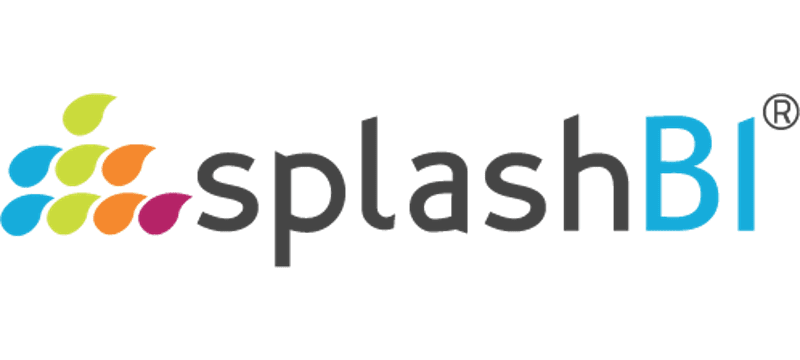Impacting business objectives, beyond the People Analytics dashboard
Understand how to make the business case for people analytics investment, including how to gain stakeholder buy-in.
Learn how to align people analytics to critical business outcomes.
Get to know how to create effective ROI from people analytics.




Increased digitization, and capture of work processes via technology, have led to an almost overwhelming amount of data being created. To use this data output to drive effective business outcomes, HR must get savvy about how it’s used.
Therefore UNLEASH is excited to share a webinar session chaired by Kate Graham, Head of Content Labs and Insights at UNLEASH, alongside Steven Atkins, Global Analytics Enablement Director at SplashBI, Shante Mahal, HR Lead – Data Architecture & Analytics at Coty, and Steven Piperno, Head of Global Workforce Analytics at FIS, as they discuss what tools HR needs to implement a people analytics strategy effectively, how it can grow better data teams, and understand where data, and what form of data, can play a central role in the business.
Dashboards can be your best friend or your worst enemy. The importance [in people analytics] relies on the storytelling.
Shante Mahal, HR Lead – Data Architecture & Analytics, Coty
Watch on-demand to:
- Get to know why HR has to get towards data storytelling and past dashboard-only approaches.
- Understand why knowing the customer and audience of the data is key, as it will improve data practice.
- Hear about the role simplification and standardization have to play.
Where is HR on its people analytics journey?
At the start of the webinar, UNLEASH polled the audience asking where they were on their people analytics and data journey. Most of the audience reported back that they were just starting out in this area with only a few saying they were happy where they were. It suggests that many understand the importance of people analytics but are not yet there, or don’t quite have the right level of buy-in to make it wholly successful presently.
Here, Piperno said, a useful way for HR to guide its journey of progression is to want to become a mature people analytics function that isn’t just interested in capturing data on dashboards but uses it to drive strategy and obtain real insight, create more advanced projects and statistical modeling as well as storytelling.
Of course, Piperno admitted, the first step has to be about creating dashboards and getting clear data but it is only the first step. Here, Mahal agreed, adding that storytelling is the true end goal of people analytics and HR shouldn’t think it has got to a good place with people analytics if it’s at the dashboard stage. Dashboards, she said, only give face value data and the storytelling is therefore key. HR should instead want to convince others about what data is telling them.
Steven Atkins advised the audience that dashboards have to be set up with the audience in mind – who is going to be consuming the information you’re presenting? It’s crucial, he said, to simplify the data in a way that is easy to understand and gets people thinking collectively in the same way and democratizes information.
Growing a people analytics and HR data team
For many, who are not yet working in mature HR data functions, they will want to know how to progress. During the webinar, Piperno revealed how he had grown his data team from half a head of resource to something much bigger. The journey involved evolving from a place where other teams came to him to understand how to make sense of their data, to getting involved in what was being captured and designing the systems that captured it. In this way, it allowed Piperno’s team a say in how this would then be used in key HR processes, such as engagement and learning, allowing them to have an impact on core business processes and strategic decisions.
In essence, Piperno described moving from a place where the data and analytics team was reactive to other teams’ data needs to be a place that was proactive and ensured that people’s data become standardized and more useful to the business. Standardization of data and the processes that capture it, Piperno noted, is something that is particularly crucial.
Importantly, as was discussed in the webinar, the data that HR captures needn’t be perfect before it starts being used to inform other mechanisms and processes. In fact, just getting started, even if the data takeaways seem to be in the draft stage, can often improve the data that is collected as more eyes get on it, and different people want to improve it. Additionally, HR shouldn’t worry about legacy systems and what form that data comes in. The key lesson here: just get started, your processes will improve as you go on the journey. Any data is data after all – and that’s a good thing!
Understanding why you want data is key
And here’s something to remember. It can be easy in the world of HR and people management, where new trends and in-vogue applications jump up all the time, to think you’ve got to have a data practice because everyone else has on. As Mahal said, this isn’t useful. One of the most important parts of getting successful data-driven outcomes is understanding why the business wants data, she said. This can help HR plan for data capture and better understand what it will inform, then help to design the UX and UI that will allow better parsing. This, she added, can then help that data capture be used in processes that can transform or better connect the people practice.
Steven Atkins made the valuable point that the common assumption that data isn’t good enough to start off on a people analytics project shouldn’t be preventative. But, actually, this is all part of the journey, and understanding where improvements need to be made is a crucial part of the maturity journey.
Analytics is now seen as a core driver of strategic value creation and even competitive advantage… it’s about creating a language or information that can be shared that’s understandable across the whole and interpretable as a common language by all.
Steven Atkins, Global Analytics Enablement Director at SplashBI
Get to know who sits at the table and where it is
A recurring refrain in HR is that it doesn’t, at least not often enough, have a seat at the table. When it comes to data, this is a question that has even more importance. If HR can foster closeness and relationships with those who hold leadership and decision-making power, they can better understand the purpose of data collection and subsequent analytics processes. In fact, this can help drive efficiencies in data activities by tailoring them best towards what the aspirations of function leaders are. Simply put: it’s about knowing the objective of the data
This approach can also help assuage doubts if an organization is fairly new to data utilization. For example: if they can agree upon core metrics and measurements even if the data is not the best at least it is aimed towards the direction the organization, or function, wants to head in. And, if HR knows the audience, it can deliver data messaging in the right language, too.
Of course, this doesn’t mean HR can forget one of the core tenets of data practice: that is to make it simple, so others can use it, make sense of it, and help drive better business outcomes. If it’s delivered as jargon, it won’t help at all.
Watch On Demand
"*" indicates required fields
Contact Us
"*" indicates required fields
Partner with UNLEASH
"*" indicates required fields
